In one neighborhood, some push for change while others resist
Listen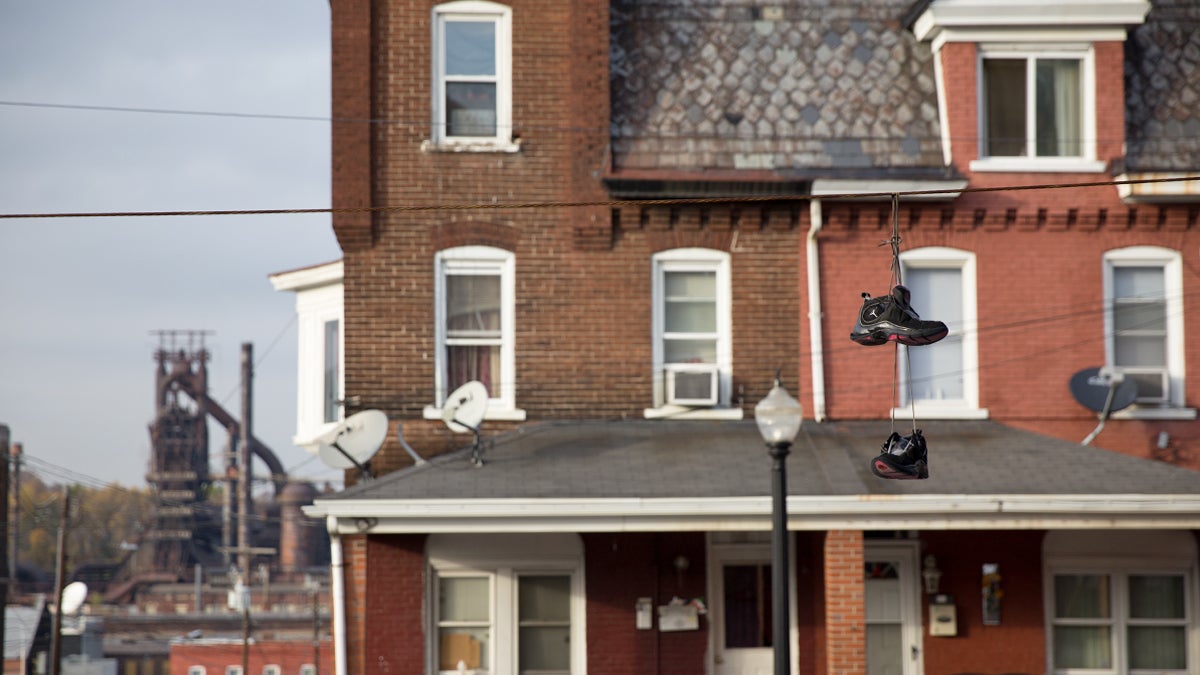
A pair of Jordan’s hang from a wire on Bethlehem’s southside. The struggling neighborhood has long lived in the shadow of Bethlehem Steel and Lehigh University. (Lindsay Lazarski/WHYY)
Developer Dennis Benner has big plans for the area surrounding Lehigh University in south Bethlehem.
Developer Dennis Benner has big plans for the area surrounding Lehigh University in south Bethlehem.
“We’re going to recreate a new neighborhood here,” said Benner, a Lehigh alum and lawyer.
South Bethlehem — residents refer to it as “the southside” — has long lived in the shadow of Bethlehem Steel and Lehigh University. Today, the neighborhood sits across the street from one of the highest grossing casinos in Pennsylvania and Steel Stacks, a renowned arts center. But the neighborhood remains one of the struggling communities in the Lehigh Valley, with a high concentration of poverty.
Benner wants to see the neighborhood go from a hodgepodge of locally-owned businesses and old single and multi-family homes to a buzzing college neighborhood with upscale housing and a vibrant nightlife.
Benner and his two sons have been buying up vacant land and rundown properties for about six years. Two parcels, an old electronics store with a collapsed roof and a condemned house will be demolished to make room for a luxury apartment building with retail on the first floor. He’s hoping for a Chipotle.
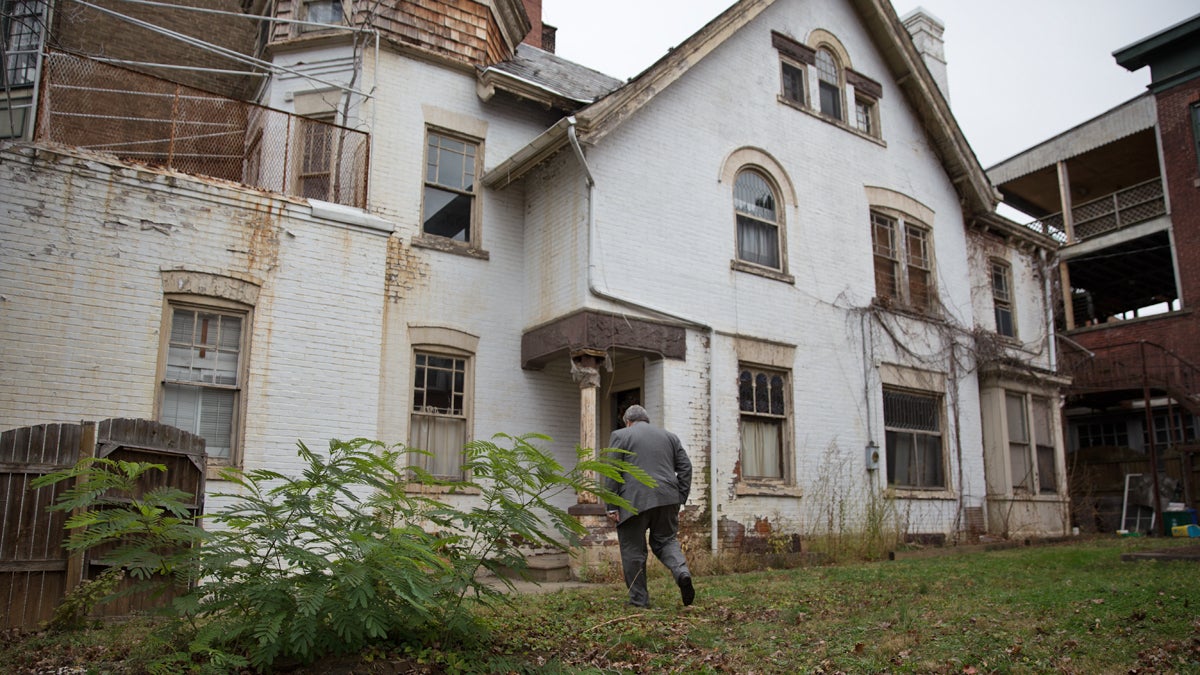
One of the condemned properties developer Dennis Benner plans to demolish to make room for luxury apartments on the southside of Bethlehem near Lehigh University. (Lindsay Lazarski/WHYY)
Across the street, Benner is planning another development using the facade of the shuttered First Reform Church as the entryway to a 10–12 story apartment complex.
“That church front facade will actually be a ruin, and behind it will be a courtyard,” said Benner. “People can wander in and out to the space. They’ll access the elevators to take them to their housing.”
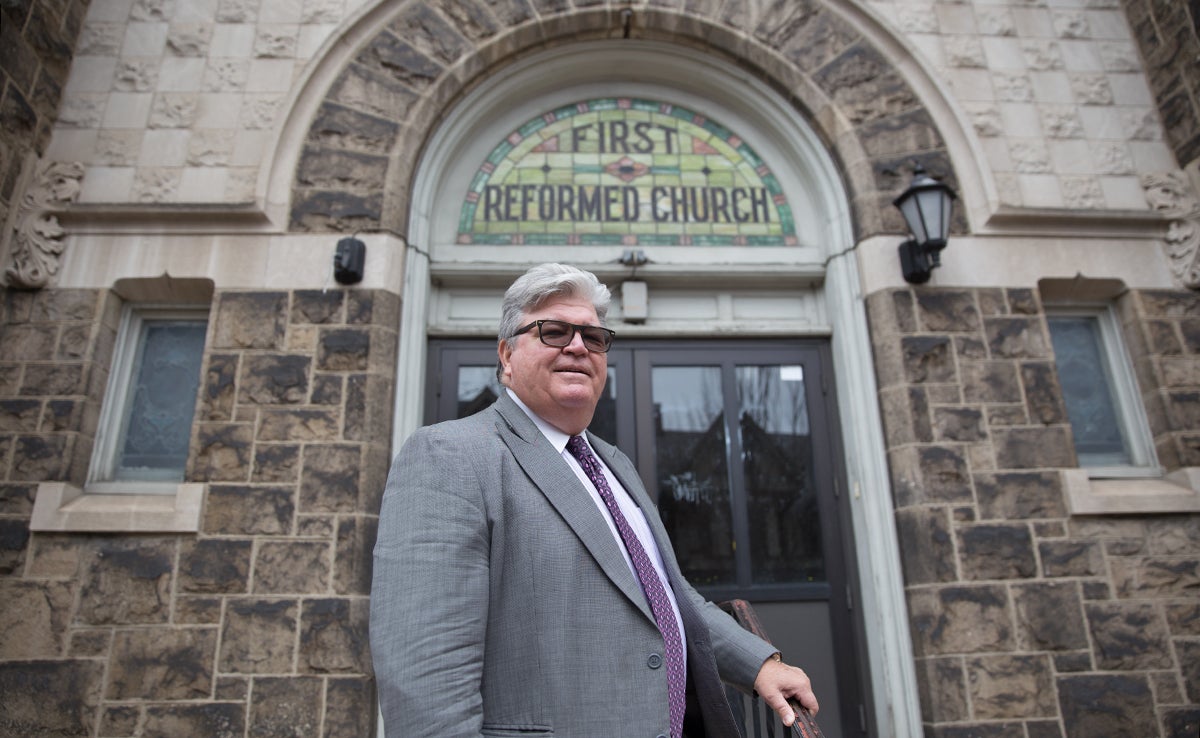
Developer Dennis Benner plans to use the stone facade and some of the stained glass windows of the First Reformed Church on Fourth Street as the entryway to an open-air courtyard with restaurants and upscale housing. (Lindsay Lazarski/WHYY)
In total, Benner said he’s planning to build six or seven buildings with a mix of retail, office space and several hundred luxury apartments that rent for $1,100 to $1,400 a month. The development will cost more than $100 million.
Not everyone’s on board with Benner
“Money talks. That’s why I call him ‘Mr. Big Pocket,'” said Olga Negron, a community leader.
Negron moved to south Bethlehem nearly 20 years ago from Austin, Texas. Negron was drawn to the neighborhood by the blast furnaces of Bethlehem Steel and the Puerto Rican flags that wave every June.
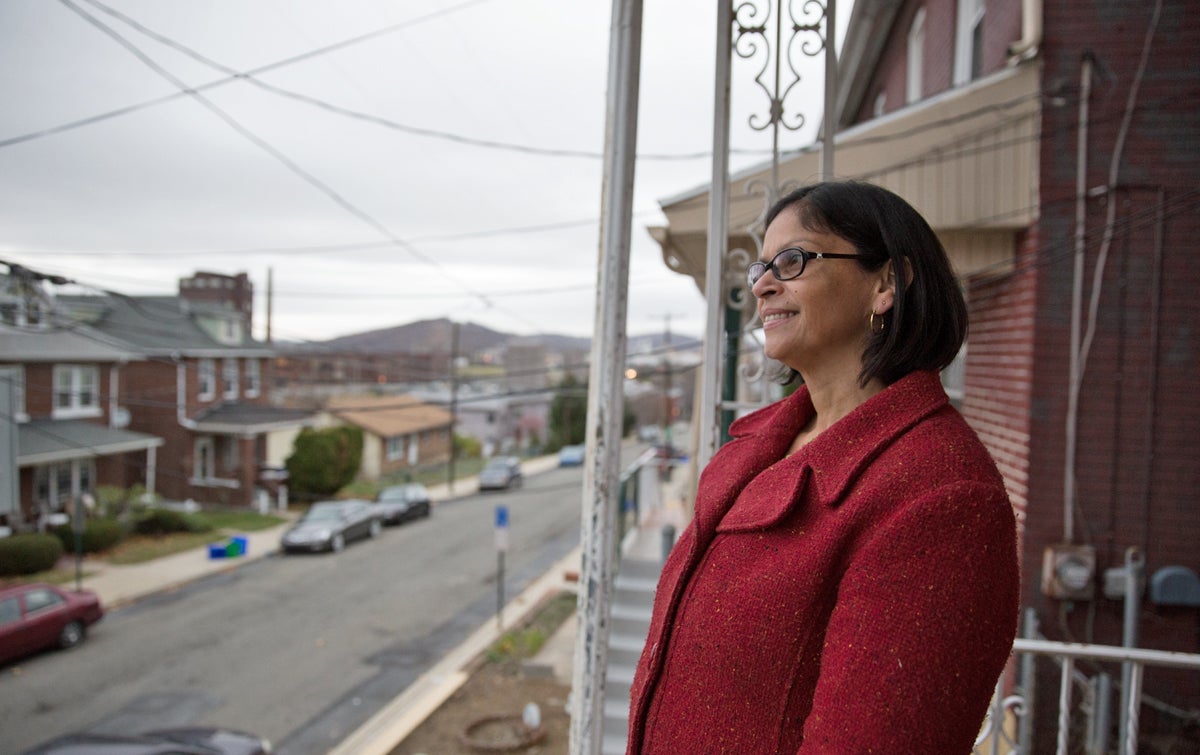
Southside Residents: Olga Negron said she’s known as the unofficial “mayor” of south Bethlehem. “My friends just say, ‘oh, here comes the mayor of the southside — because I’m always all over,'” said Negron. (Lindsay Lazarski/WHYY)
“I rented in the southside first for about a year and a half and ended up buying my house right here on the southside because I saw the energy. I saw the potential,” she said.
Negron, who was elected to City Council in November, says she’s seen the neighborhood come a long way since she first moved here and that she’s been a part of helping to revitalize the community. She said she’s not against development, but Benner’s plans don’t fit in with the rest of the neighborhood.
In south Bethehem’s historic district, typically the maximum building height in the area is four or five stories, compared to Benner’s plans of building six to 12 stories. Negron said the development is not to scale. She also worries about whether the existing local businesses will be able to survive long periods of construction without being displaced.
And then there’s the rent:
“High class, higher-end apartments in that neighborhood doesn’t even go together,” said Negron. “Who is going to afford to live in there?”
In the area where the development is planned, more than three-quarters of residents rent, and the median yearly income is just under $23,000, according to the most recent U.S. Census. So, that’s nearly $600 per month — about half of what a person would need to live in one of Benner’s proposed buildings, following the guideline that no more than 30 percent of income should be spent on housing.
Blocks away and closer to Lehigh University, nearly half of residents are renters, and yearly median income is $54,000. That means people can afford about $1,350 for monthly housing costs.
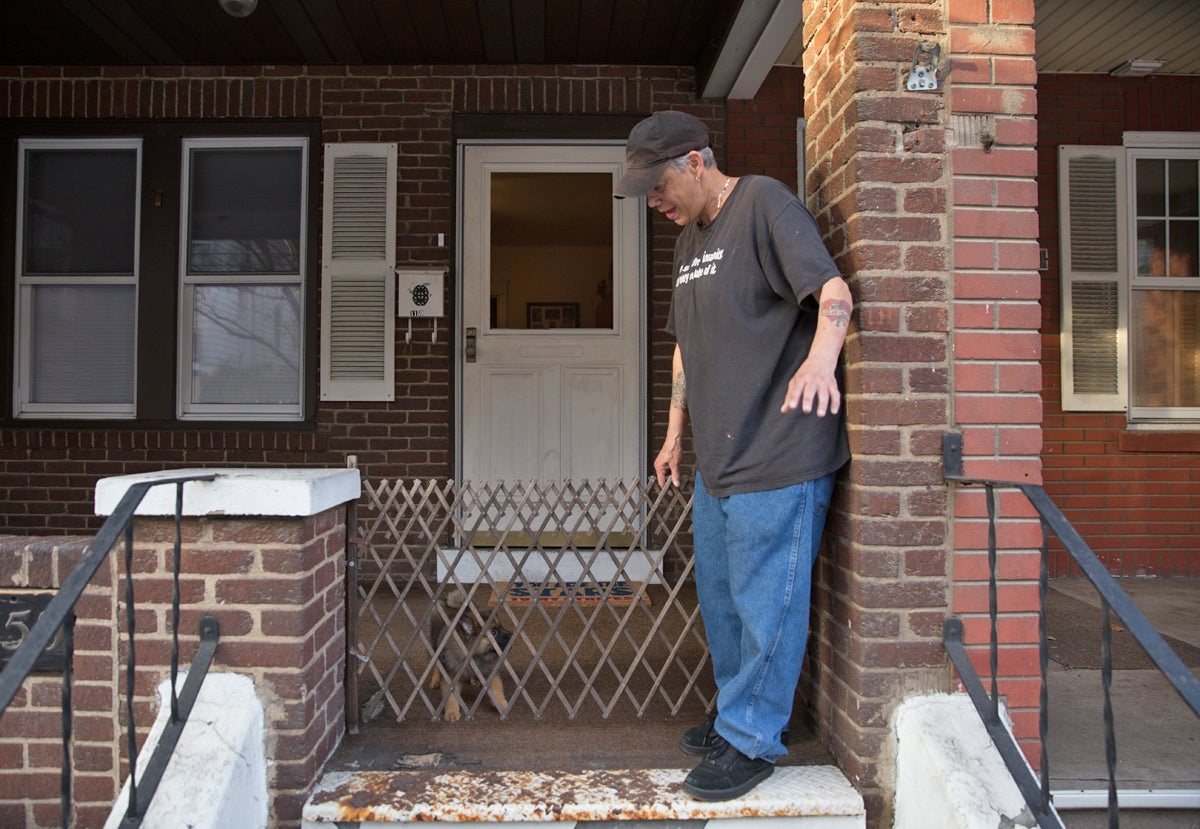
Southside Residents: Wanda Velez moved to the neighborhood from Jersey City, N.J. in 2002. “Look around you,” said Velez. “People are struggling to pay their rents.” (Lindsay Lazarski/WHYY)
Change
Benner says he wants to attract residents associated with the university, like professors, staff, graduate students and young professionals.
“I’ve been doing development work for 35 years, and if there is one thread that runs through it all, it’s change,” said Benner. “I represent change, and a lot of people don’t like change. They like the way things are, but it’s like anything: if you don’t change you’re going to die on the vine.”
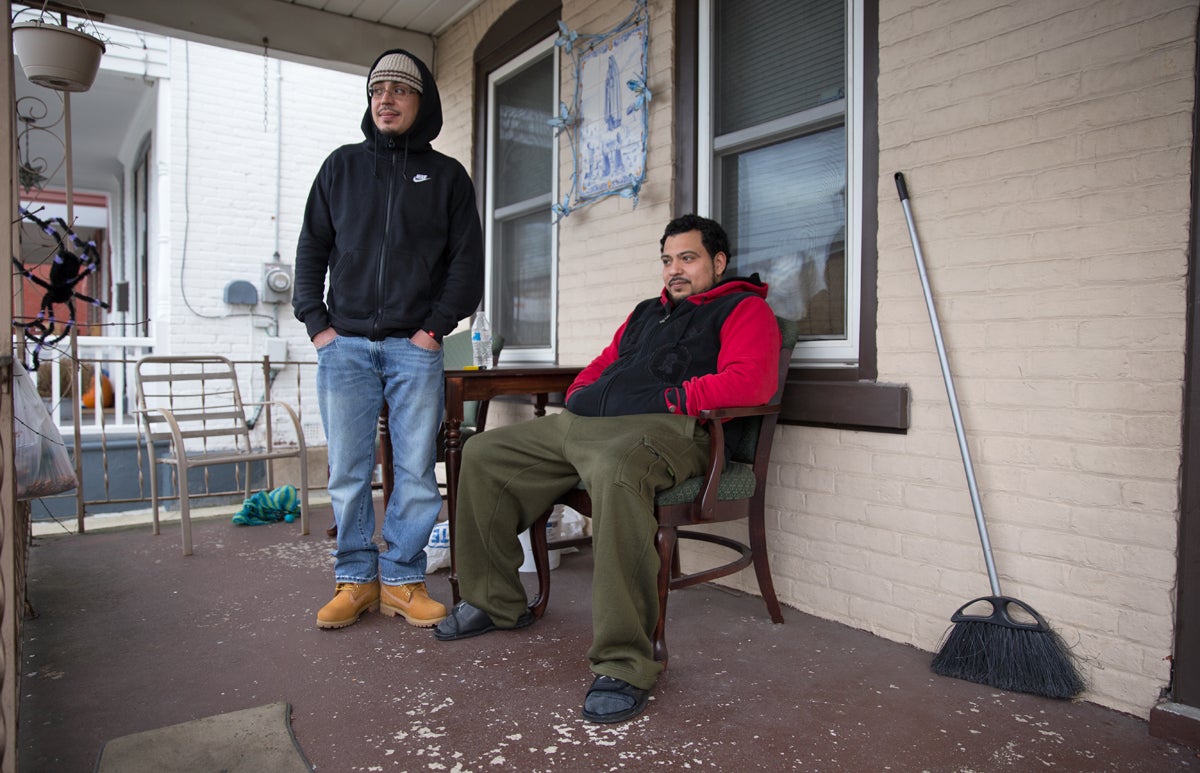
Southside Residents: “Change is always a good thing,” said Steven Pittre pictured with his cousin Fernando Rodriguez. Pittre said there’s a lot to do around south Bethlehem, but “I work so much, there’s no time to do it.” (Lindsay Lazarski/WHYY)
Benner is not the only one with an eye toward development on the southside.
Former Bethlehem mayor John Callahan, director of development at Florio, Perrucci, Steinhardt & Fader, LLC, expects to break ground on a $35 million mixed-use development called the Greenway Commons with Perone Development in spring 2016. He’s planning several four to five story buildings with retail, offices and 110 luxury apartments that will rent for $1,200–$1,400 a month.
Economic incentives
To help finance these projects, Benner and Callahan are hoping to take advantage of a state program called the Community Revitalization & Improvement Zone (CRIZ).
The CRIZ incentivizes development on underutilized or vacant land by taking most of the state and local tax generated in the zone and giving it back to the developer to pay down the debt.
Callahan said tax incentives like the CRIZ encourage new development in the urban core of smaller Pennsylvania cities like Bethlehem.
“Would we be investing $35 million if there wasn’t a CRIZ? I think the short answer is no. And I think most of these projects would not happen if not for the CRIZ incentive.”
Callahan said he’s also seen the southside come a long way since Bethlehem Steel closed and the site became one of the nation’s largest brownfield sites.
“We’ve had a lot of investment with the casino, and we’ve got a tremendous arts and cultural center,” said Callahan. “The entertainment and play aspects and cultural aspects are there, and we’re trying to provide both the ‘work’ and ‘live’ part.”
Integrating change
That “live, work, play” environment is just what the city wants to create, said Alicia Miller Karner, Bethlehem’s director of Community and Economic Development. She said the city welcomes new development to the southside.
“We’re talking market-rate apartments. We’re talking about people who cannot just barely afford to live there, but afford to live there and spend money there. I think that’s what you want to see in any community that wants a vibrant business district as well,” said Karner.
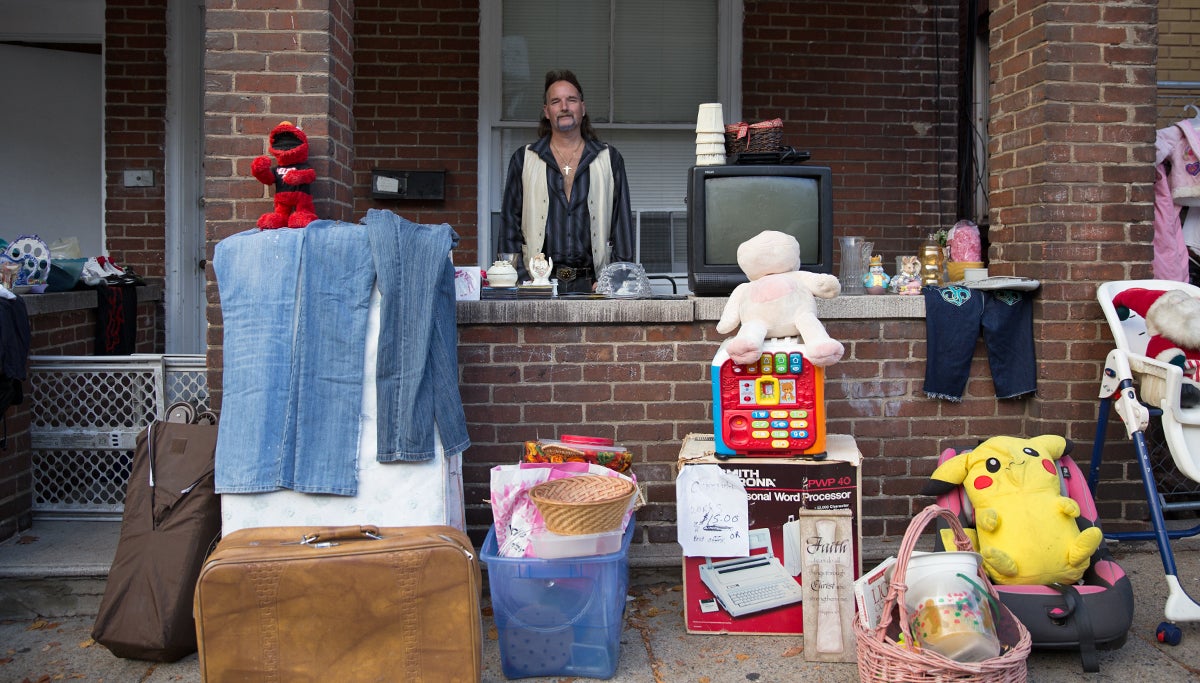
Southside Residents: John Zimmerman rents a house in south Bethlehem with his girlfriend. He said in his spare time he sets up a yard sale on his front porch. “As long as it works, I’ll sell it,” said Zimmerman. (Lindsay Lazarski/WHYY)
When in comes to urban redevelopment, Karen Beck Pooley, an adjunct professor at Lehigh University and a consultant with czb, a neighborhood planning firm, said the conversation often centers around “who’s next” and “who do we want to bring in,” while ignoring the existing population.
That approach “does a lot of damage because it reorients the thinking to ‘how can we get this one development project made,'” said Pooley, “instead of integrating new into existing and just developing in a far more sustainable way.”
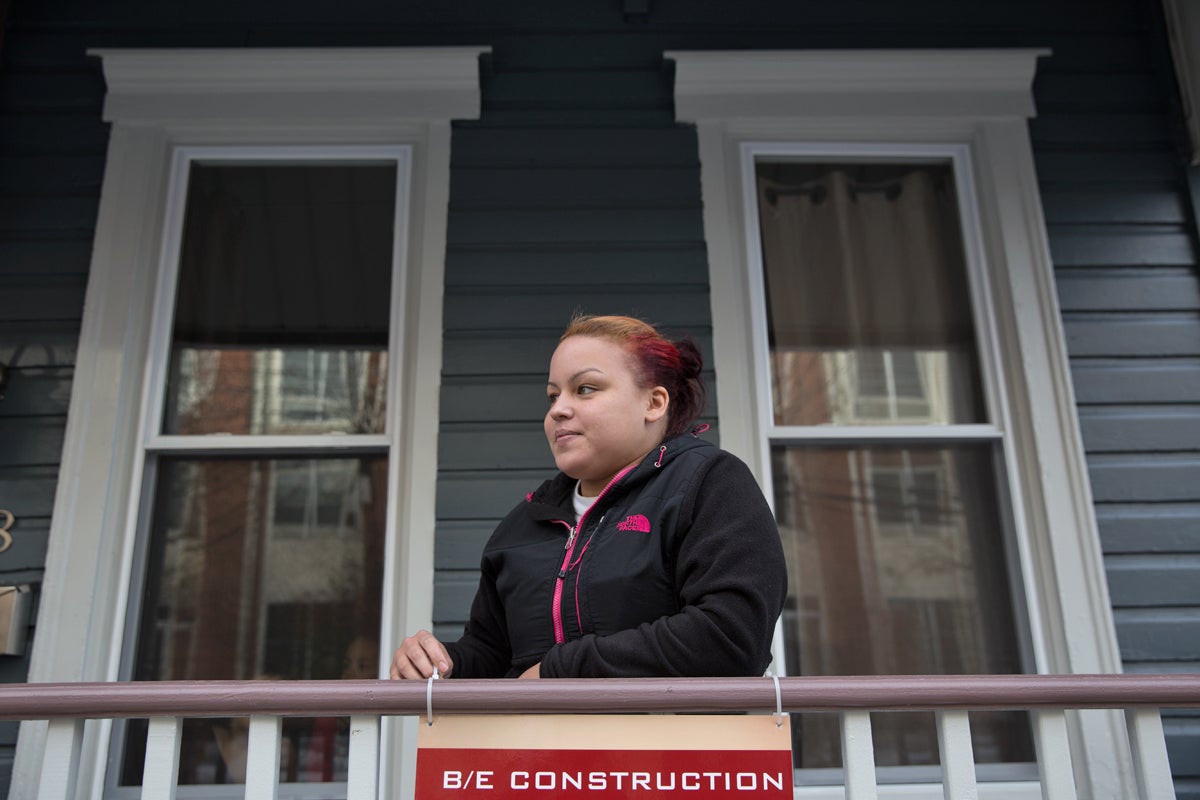
Southside Residents: Tiffany Gonzalez moved from Allentown to south Bethlehem. Recently the Community Action Development Corporation of Bethlehem helped to put a new facade on the front of her house. (Lindsay Lazarski/WHYY)
For Benner’s proposed developments to be realized, he will still need approval from city agencies and the CRIZ authority. But he said it’s just a matter of time.
WHYY is your source for fact-based, in-depth journalism and information. As a nonprofit organization, we rely on financial support from readers like you. Please give today.




